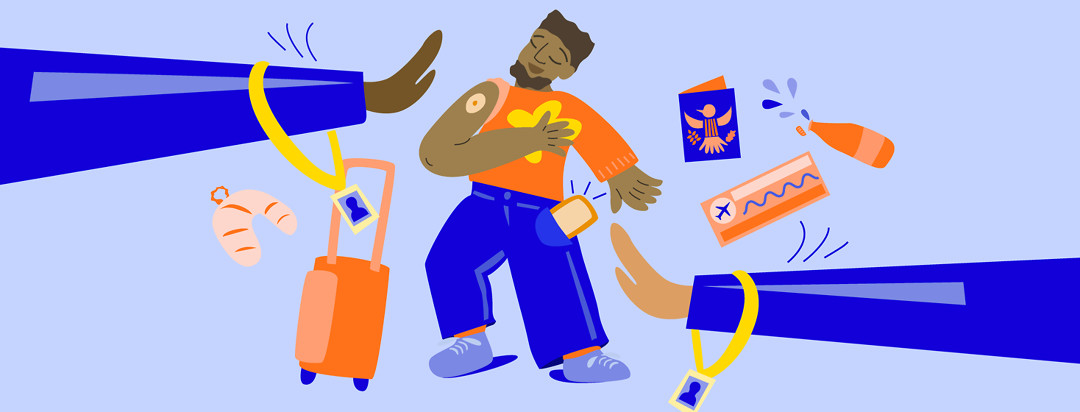Air Travel with a CGM
Air travel with type 2 diabetes requires some special attention. This is especially true if you are wearing a continuous glucose monitor (CGM) or some other medical device while flying.
Generally speaking, you should be able to travel while wearing a CGM or other medical device with some accommodations. You probably also need to bring along a little extra patience and plan on extra time at the security check.
Before traveling check with your CGM manufacturer
Check with the manufacturer for guidance on traveling with your CGM. Be sure to get information about the specific model and version of the device you have. This includes the software release you’re using.
If you fail to follow the manufacturer’s guidance you risk damaging your device and/or voiding your warranty.
Talk with customer service and look on the manufacturer’s website for information about what kind of airport security screening equipment can cause interference or damage. Also check if there are any special use instructions for flying, and what to do if your device stops working while you’re traveling.
When it comes to airport security, you need to find out about x-ray machines, metal detectors, and airport body scanners. Your CGM’s manufacturer can tell you if it’s safe to put your sensors, transmitters, receivers, etc. through any of this security screening equipment.
Since cell phones and cellular devices need to be in airplane mode, once you’re on the plane you’ll need to use bluetooth to keep the communications link to your CGM active. Before traveling learn how to switch communications mode on your device, if necessary.
Be sure to find out how to reach the manufacturer while traveling in case your CGM stops working. This is especially important on long trips or when traveling internationally. The manufacturer may be able to help you find a fix while you’re on the road.
Pack and prepare carefully
You’ll want to pack all your diabetes supplies in your carry-on. This includes any CGM sensors and supplies you’re taking with you. Also, carry your doctor’s letter and copies of your prescriptions with you. In the off chance that your CGM stops working while you’re traveling, pack a glucose meter and strips as a backup.
I find it very helpful to sort my diabetes supplies and pack them in see-through zipper-lock plastic bags. This makes it easy for me to pull out my supplies when I need to. The TSA agent or security person can clearly see what I have. And I don’t have to worry about some of my things being lost or left behind.
Think about where you place your CGM sensor on your body before going to the airport. Chances are you will go through a pat-down or visual screening. Make sure your sensor is somewhere on your body that you’re okay with being touched or having to reveal by pulling up your clothes.
At the security check notify the TSA agent
Going through security with a medical device attached to your body can feel a little tricky. You’ll need to follow both the guidelines from your device manufacturer and TSA regulations.
The TSA guidance says to let the TSA agent know that you have a medical device attached to your body, what kind of device it is, and where it is attached. You can request a pat-down screening instead of going through a metal detector or imaging device. The TSA agent may do an additional screening which could include a visual inspection of the device and/or having you wipe your hand across the device then swabbing your hands to test for traces of explosives. If you prefer, you can ask for your screening to be done in private.
If you have questions or concerns about your screening ask to speak with a TSA supervisor or a passenger support specialist.
Good advice: Request the pat-down check
People go through TSA checks every day while wearing CGMs and other medical devices. I spoke with several people I know who use CGMs about their experience traveling. Every single person I talked to advised following the manufacturer’s guidelines and requesting a pat-down screening from the TSA.
One person mentioned that by requesting a pat-down he wasn’t able to go through the TSA Pre check. This meant he had to remove his shoes, belt, etc. as if he was going through the standard TSA check.
Getting a pat-down will take longer than the standard security check. However, it seems like a reasonable trade-off for making sure that your CGM remains safe and working. It just one more thing in life with type 2 diabetes that needs to be managed.

Join the conversation